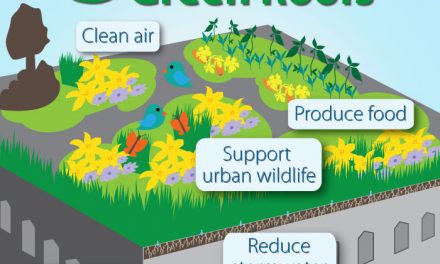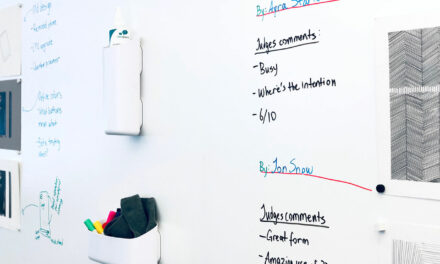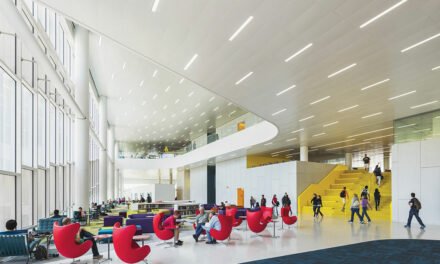The average productivity of manufacturing companies has risen steadily from the 1990´s, whereas the productivity of construction companies has stayed flat or even declined. However, the use of prefabricated elements can assist construction companies increase productivity and save time and money. The use of prefabrication offers a number of benefits which can lead to reduced construction costs, safer job sites, and less waste.
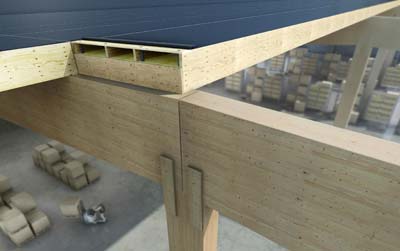
Metsä Wood prefabrication ripa beam Kerto LVL structure. Credit: Metsä Wood
Compared to manufacturing industries, the construction sector is still suffering from poor economic performance. McKinsey* reports that the productivity gap between the two industries is currently 1.7-fold. The next 15 years will be crucial, since urban land area is estimated to triple between 2000 to 2030. By 2050 almost 70% of humankind will live in urban areas.
“Construction companies are typically operating with thin profit margins, thus relatively small reductions in costs can produce significant positive impacts. Utilizing prefabricated elements could be a solution for reducing construction costs without compromising quality. Depending on the size of the investment, different degrees of prefabrication may pay off even if their prices would be higher than those of building on site,” says Matti Kuittinen, architect and researcher from Aalto University.
Prefabrication can reduce project schedules
Construction projects are often finished late. When delays in the construction projects are compared to budget overruns, time plays a much greater role in the profitability of a project. According to construction professionals interviewed by McGraw-Hill Construction**, nearly 70% of projects that used prefabricated elements had shorter schedules, and 65% had decreased budgets.
“Utilizing every prospect in reducing overproduction, transportation, rework and waiting times helps in decreasing construction costs. Lean construction through prefabrication is an opportunity to meet the future needs of the global construction sector,” says Juha Toimela, vice president, responsible for business operations in Finland with the construction and development company SRV.
Prefabrication can increase productivity and produce less waste
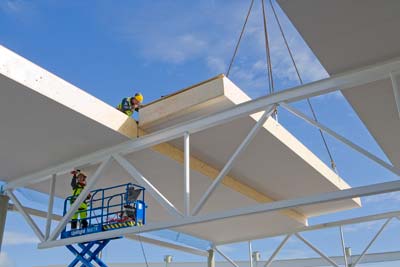
Metsa wood prefabrication Kerto LVL module installation. Credit: Metsä Wood
Construction companies see economic benefits from the use of wooden modular building products. In Sweden, the lean approach to managing prefabricated house factories was found to potentially boost productivity from 10% to a staggering 230%. Waste generation, greenhouse gas emissions and claims during construction process decrease the productivity of the construction sector. Construction professionals reported that almost 80% of projects using prefabricated products produced less waste.
“We should be focusing more on the speed of the process without compromising quality. Shorter building time and easier design leads to faster revenue, but is also an opportunity to meet the rapidly growing needs of urban construction and sustainability demands at the same time,” Toimela notes.
Modularity improves the assembly process
Perhaps the greatest potential for reducing construction costs and improving building time and quality construction, lies in the prefabrication process itself. For example, Metsä Wood’s Kerto® LVL prefabricated roof and floor elements assist in erecting the roof or floor of a building much quicker than using traditional construction methods. Modularity and standardized details improve the assembly process. Also the risk of accidents and consequent delays on the construction site can be avoided by using prefabrication. In addition, prefabrication can provide fast solutions to weather-related issues.
Quick facts
- Lean approach to construction is needed: by 2050 close to 70% of humankind will live in urban areas.
- Time is money: almost 70% of projects using prefabrication had shorter schedules, 65% had decreased budgets.
- Less waste: almost 80% of projects using prefabrication produced less waste.
- Fast and robust weather protection: up to 1, 500 m2 Metsä Wood’s Kerto® LVL roof elements can be assembled in a single day.

The establishment of the Diesel Benelux headquarters in the Netherlands is a special example of the synergy between the architects, the consulting and structural engineers, and Metsä Wood. From the first moment onwards, solutions and ideas were sketched, which led to an integrated solution in a record time. “The roof is a masterpiece: From the outside the saw tooth façade is a landmark, and inside the visible wood structures bring warmth. Building with Kerto-Ripa was fast and the elements are produced efficiently and sustainably – not forgetting the added extra that the exposed wood combined with steel and concrete bring into the Diesel DNA.” Quote from Dick Venneman, Dedato designers and architects. Credit: Metsä Wood
Learn more about how using prefabricated elements can improve construction process and lead to faster revenue: http://www.metsawood.com/publications.
Metsä Wood provides competitive and environmentally friendly wood products for construction, industrial customers and distributor partners. We manufacture products from Nordic wood, a sustainable raw material of premium quality. Our sales in 2015 were EUR 0.9 billion, and we employ about 2,000 people. Metsä Wood is part of Metsä Group.


